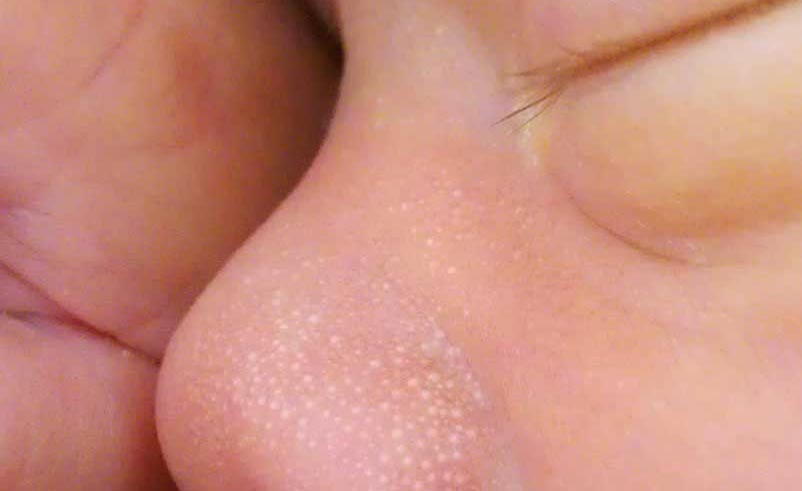Milia (嬰兒粟粒疹): Symptoms, Prevention, Treatment - Explained by Dr. Yeung Ho Hong(楊浩康)
One of the most common skin conditions seen in newborns is milia. This condition primarily occurs because an infant’s sebaceous glands have not yet fully matured, leading to the accumulation of sebum within the pores that results in tiny, round bumps with a white or yellowish appearance. This phenomenon is a normal physiological occurrence and is not related to any infection or skin disorder. Instead, it reflects a natural part of the skin’s maturation process in infants.

Signs and Symptoms of Corn Rash
Milia frequently appears on the nose, cheeks, and chin, although it can sometimes also be observed on the forehead or around the eyes. When parents gently touch these bumps, they will usually feel flat and small, rather than raised like other types of skin lesions. These bumps do not cause itching or pain, so most infants do not experience any discomfort or fussiness due to them.
Care of Corn Rash
In most cases, these milia resolve on their own within two to three weeks after birth, and no special treatment is required. Parents only need to maintain a gentle daily skincare routine for their baby’s face by washing with warm water and a mild baby cleanser, while avoiding harsh or irritating products. It is particularly important that parents refrain from squeezing or scraping the bumps with their nails or any other objects, as doing so could damage the skin’s integrity, potentially lead to infection, or even cause scarring.
In addition to keeping the face clean, proper moisturizing is also crucial in infant skincare. Using a fragrance-free and alcohol-free moisturizer can help protect the baby’s delicate skin barrier and reduce irritation from external factors. After washing, parents can gently pat the infant’s face dry to maintain the skin’s softness and comfort, which in turn facilitates the natural fading of the milia.
A common misconception among some parents is that milia might be a sign of a skin infection or another pathological condition that requires treatment. This misunderstanding can lead to unnecessary worry and even the improper use of topical medications. In reality, milia are purely physiological and do not have any long-term negative impact on an infant’s health. With proper daily care, these bumps usually disappear as the baby’s sebaceous glands mature.
Common Misunderstandings and Points for Attention
Some parents may also worry that the presence of milia could be detrimental to the overall health of their infant’s skin. However, the formation of milia is simply due to the immaturity of the sebaceous glands and is both a transient and natural process. No additional medical intervention is needed unless the milia persist beyond the typical timeframe or if they are accompanied by signs of significant inflammation, ulceration, or other unusual symptoms. In such cases, consulting a pediatrician or dermatologist is advisable to rule out other skin conditions.
Overall, milia is a common and harmless skin condition in newborns that reflects a normal stage in the development of infant skin from the fetal period through the early postnatal phase. Parents need only provide gentle care and monitor the skin, without undue anxiety over these temporary lesions. As the infant grows and the sebaceous glands fully develop, the tiny white or yellowish spots will gradually fade, leaving behind smoother, healthier skin.
Enjoying the journey of watching an infant grow and understanding these normal physiological changes is an important part of parenting. Maintaining a proper skincare routine not only supports the natural resolution of milia but also helps to nurture the overall health and well-being of the baby’s skin. With time, as the skin develops its full function, these small bumps will disappear, reaffirming that milia is just one of the many normal variations in newborn skin.
